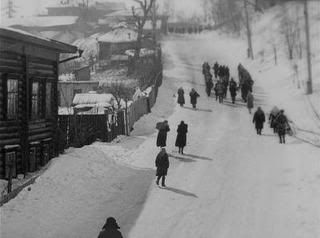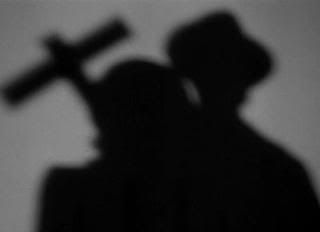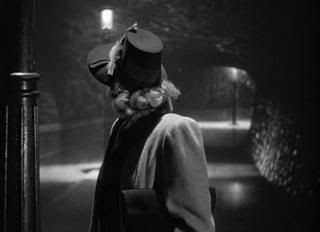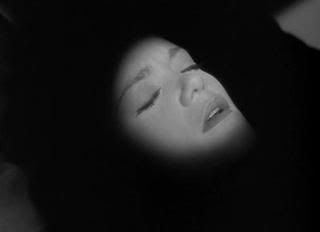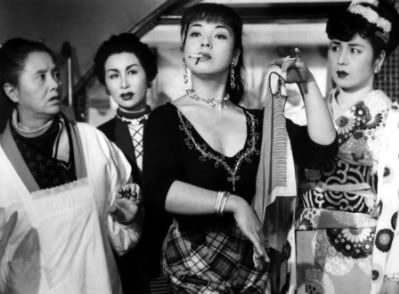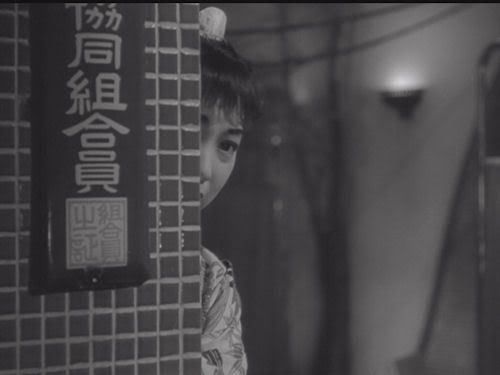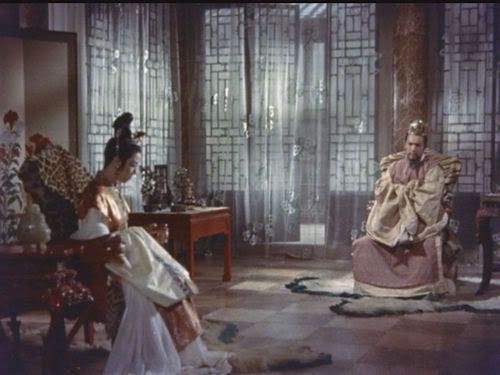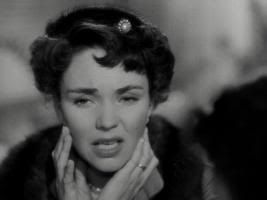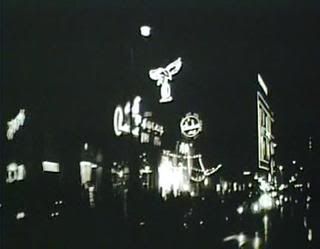
I expect that my experiences with Iranian cinema have generally conformed to those of my fellow arthouse junkies. That is to say, I'm familiar with (and incidentally, a huge admirer of) the films of Abbas Kiarostami, and adequately acquainted with his New Wave contemporaries. Still, as far as I was concerned, the birth of the country's film industry coincided with its emergence onto the international festival scene during the 1990s.
Imagine my surprise then, when I had the opportunity to acquire a pre-revolutionary film from 1965. Was this to say that Iranian cinema existed before Kiarostami? Before even Dariush Mehrjui's
The Cow (1969) - widely credited with kickstarting the New Wave? A chance to outperform my comrades in the obscurity stakes is not a temptation that someone like myself can humanly resist, so naturally I snapped up the oddity - entitled
Brick and Mirror - without a moment's hesitation, despite knowing approximately zero about either film or filmmaker Ebrahim Golestan.
Cinema, in both its breadth and its depth, is a beast that will forever remain unfathomable to the 21st century enthusiast. Who knows just how many masterworks are currently lost in the annals of oblivion? How is it possible for even the most ardent devotee to comprehend the real gravity of everything that's preceded them? With over a century of history and a reach that's close to globe-spanning, this is a medium doesn't make life easy for its followers. Yet for all its innate futility, the disciple's mission is not one that's without its rewards. As a (budding) cinephile myself, I can claim with fair certainty that there are few greater (intellectual) pleasures than the joy of cinematic discovery.
It's that sensation, that adrenaline rush, that abstract high that coursed through my veins during
Brick and Mirror. Perhaps the element of surprise affected my judgment - in the Internet age where hype is impossible to escape (not necessarily a bad thing, but undeniably tiresome on occasion), it feels liberating to enter into a filmic contract without any expectations. Even so, upon further reflection and post-viewing scrutiny, I find myself arriving at the same conclusion that I formed immediately after film’s end: this is remarkable,
essential filmmaking, which deserves far greater recognition than that which can be provided by a critical flyweight like
me.
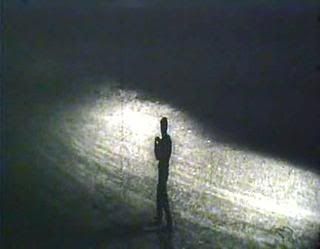 Brick and Mirror
Brick and Mirror offers us two leads: a taxi driver and his on/off lover. One night, after giving a cab ride to a mysterious woman, the former discovers a baby in the back of his car. Cue an episodic 24hr journey through a cross-section of Iran's urbania, where everyone he turns to - from bohemians and tramps to doctors and lawyers - stumbles in their attempts to find a feasible solution to his problem. Only with the appearance of his smart and worldly lover is he able to discover some sort of tentative peace. The couple's brief moments of harmony reveal their potential to forge a makeshift family with the abandoned child. But to do so would require a commitment that might be beyond their capabilities as struggling, blue-collar citizens who value their individualism. In essence, the baby is a catalyst for self-discovery. The real journey here is into their respective consciences, and it's one that doesn't necessarily provide comforting results.
It's easy to see how
Brick and Mirror could have influenced the New Wave features that followed in its wake. Golestan is a socially-conscious filmmaker, whose neo-neorealist direction creates a compelling discord against the more metaphysically-inclined analyses upheld by his screenplay. From a contemporary Western perspective, his approach to
Brick's subjects grounds the film in an authenticity that invites the viewer's interest on a secondary level as historical document. With the lines between narrative and reality often blurred, Golestan's observational record of moral degeneration, spiritual stagnation and financial deprivation retains its ability to surprise and unnerve. We never get the sense that we're watching
characters here - these are real human beings, facing up to the difficulties of everyday life in Tehran. It's these attributes that lend such credence to the work of many of Iran's later, more acclaimed directors.
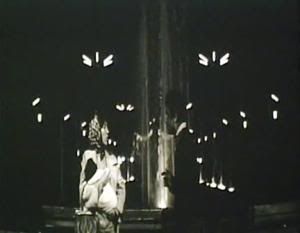

This is not to say that Golestan is without his stylistic flourishes, nor should one assume that the film is simply a record of poverty and hardship.
Brick and Mirror's opening sequence takes place inside our protagonist's taxi as he slowly makes his way through the neon nightscapes of modern Tehran. (One wonders if Martin Scorsese had come across this prior to the making of a certain classic from 1976...) Soon afterwards, the film takes a sharp left turn into the world of expressionistic mysticism during an encounter in a dilapidated house. And Golestan, free from cinematic conventions as we know them, liberally alternates between handheld camerawork and static long-takes, whilst frequently defying the 180 degree rule that's such a staple of continuity editing. Meanwhile, his journey into the night takes the audience into a vibrant café where alcohol flows freely, where women can dance in Western attire, and where (presumably) homosexual men exist as equals. Needless to say, this is worlds removed from the portrait of Iranian life that many of us have become accustomed to in recent years.
Indeed, the film's strongest presence is the female lover who, at one point, struts around like a sex kitten in her undergarments. Golestan maintains too much distance to venerate any of his characters, but he clearly values the forthright emotional honesty of the woman over the commitmentphobic, responsibility-shunning man. Nevertheless, the director takes pains to portray his character's malaise as symptomatic of a much wider condition plaguing masculinity during the era.
Brick and Mirror reverberates on an allegorical plane, as a cinematic treatise on the resounding failure of government and establishment to provide for their people. A prolonged discussion between a police chief and a doctor exposes the exasperation and anger that even respected pillars of the community feel towards their society. Yet neither feels the need to act upon it. This is a trait that one finds in all of the film's men: there is much talk, but when it comes to genuine action, they wilt.
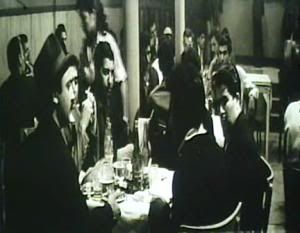
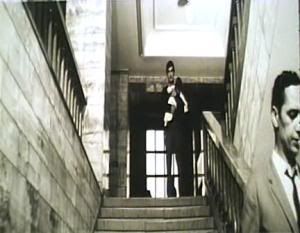
An external, presumably malevolent spectre instills a paranoia that no doubt affects their mindsets - an ominous radio plays underscores the aforementioned opening sequence by discussing "anguish", "fear" and the "thousand-eye perils"; and our protagonist spends a lengthy amount of time worrying about the judgments of his unseen neighbours after taking lover and child home for the night. The nature of this implacable fear is never quite clear to us, though its enfeebling effect upon his mentality (and, consequently, his decison-making process) is painfully apparent. Against this context, the film's most significant female characters morph into beacons of strength, better-equipped to tackle social problems than their male counterparts.
For all his feminist tendencies and institutional critiques however, it appears that Golestan is first and foremost a humanist. He remains forever attuned to the intimate dramas that define his emotional content. In this director's view, both personal and political are as fundamental as one another, and
Brick and Mirror is at its core a desperate plea for the reconciliation of these increasingly divergent modes of thought. His film reaches its absolute zenith by achieving just that during the unforgettable finale at an orphanage. Actualizing his promise as a documentarian, Golestan dispenses with his narrative trajectory altogether and instead focuses in on the faces and bodies of Iran's forgotten children. His seamless montage confronts the viewer with the uninhibited joy and purity of blameless innocents. Their figurative weight is astounding, demanding a call to action. How can we live with ourselves if the world inherited by the next generation is one that's in complete disarray? And yet, damningly, it turns out that our two leads can do just that. The film ends ironically: another taxi ride intimating technological progression despite the abiding feeling of moral immobility.
 Brick and Mirror
Brick and Mirror undoubtedly appears even more striking today when one notes Iran's path through history since 1965. Bear in mind that I was subjected to an abysmal copy of the film, that required the utmost concentration even to make out the characters. It was worth it. I wouldn't be surprised if this was the most sexually frank and overtly polemic Iranian film ever made (not that it's particularly indulgent in either category). But what do I know? If a film as accomplished as
Brick and Mirror can remain neglected for so long, then who's to say that there aren't
other, more critical, more damning and daring Iranian masterworks out there waiting for reappraisal? And why stop at Iran? How much cinema have we, even in the West, supposedly lost to the hands of time and misguided distributors? As cinephiles, we spend so much time adhering to the canon and listening to what other, apparently more distinguished critics have to tell us. How else have
Citizen Kane and
La règle du jeu - both superb films - retained their virtual monopoly at the top of
Sight & Sound's Top Ten lists for the last half-century? It's too easy to think "the buck stops here" when it comes to this most infinitely rewarding of art forms. It doesn't. There is no objective truth in so subjective a medium, so why place limitations on the potential gifts that it can bestow upon us? Granted, accessibility is an issue - though it shouldn't prevent us from searching, from seeking, from
fighting. I realize that
Brick and Mirror could have been a stinking mountain of dog turd. But isn't this a chance that we have to take? Perhaps I feel too great a sense of duty here. Perhaps one should exercise some restraint with one's devotion. I don't know. I guess I just love adventures. And thanks to this one, I hope that at least a few more individuals will be aware of
Brick and Mirror's existence.
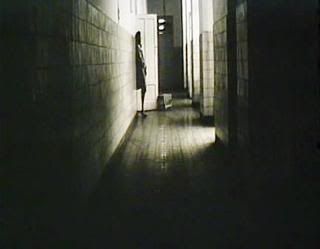
 An unsettling sense of disconnect permeates The Ascent (1977). Further scrutiny reveals a surprising source for the phenomenon: a simple segregation of black and white. Its first half is situated almost entirely in snow-smothered Belarus, where high-contrast photography figuratively exposes the two divergent strands of morality that will come to dominate the film's psychological canvas. In these initial chapters, Larisa Shepitko shows few qualms in pursuing a partisan approach to her subject matter: this is World War II, where the Soviet populace struggle to survive alongside the malevolent spectre of their German tormentors. It certainly appears as if the director's aesthetics are being used to sculpt a patriotic tale of good vs. evil.
An unsettling sense of disconnect permeates The Ascent (1977). Further scrutiny reveals a surprising source for the phenomenon: a simple segregation of black and white. Its first half is situated almost entirely in snow-smothered Belarus, where high-contrast photography figuratively exposes the two divergent strands of morality that will come to dominate the film's psychological canvas. In these initial chapters, Larisa Shepitko shows few qualms in pursuing a partisan approach to her subject matter: this is World War II, where the Soviet populace struggle to survive alongside the malevolent spectre of their German tormentors. It certainly appears as if the director's aesthetics are being used to sculpt a patriotic tale of good vs. evil.
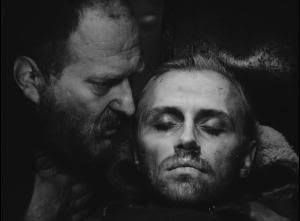 The Ascent is most alive when exploring the expanses offered by the Belarussian countryside, in which it discovers a brand of lyrical realism that intoxicates the senses. Nevertheless, the film's greatest gift is also its biggest flaw. Shepitko's visual style is ravishing to the point where its absence during the confined spaces of the film's second half is felt all too resolutely by the viewer. Undoubtedly, this is her intent; the transition from agoraphobia to claustrophobia inducing a dissonance that reinforces the inhumanity of the protagonists' incarceration. Yet in opting for such a technique, the director strips away at the imagery that grounds her shamelessly allegorical narrative in authenticity. Without the open spaces in which her camera thrives, The Ascent begins to sag under the weight of its Christian metaphors: this is, in essence, a 20th-century reconceptualization of the Jesus/Judas relationship. Jesus (Sotnikov) is venerated beyond belief, whilst Judas (Rybak) exchanges his integrity for survival - degenerating into delusional paranoia as a result. Has Shepitko therefore duped us? Are her attempts to comprehend the individual/national conscience merely a disguise for yet another dualism (hero vs. villain), this time with a Biblical twist?
The Ascent is most alive when exploring the expanses offered by the Belarussian countryside, in which it discovers a brand of lyrical realism that intoxicates the senses. Nevertheless, the film's greatest gift is also its biggest flaw. Shepitko's visual style is ravishing to the point where its absence during the confined spaces of the film's second half is felt all too resolutely by the viewer. Undoubtedly, this is her intent; the transition from agoraphobia to claustrophobia inducing a dissonance that reinforces the inhumanity of the protagonists' incarceration. Yet in opting for such a technique, the director strips away at the imagery that grounds her shamelessly allegorical narrative in authenticity. Without the open spaces in which her camera thrives, The Ascent begins to sag under the weight of its Christian metaphors: this is, in essence, a 20th-century reconceptualization of the Jesus/Judas relationship. Jesus (Sotnikov) is venerated beyond belief, whilst Judas (Rybak) exchanges his integrity for survival - degenerating into delusional paranoia as a result. Has Shepitko therefore duped us? Are her attempts to comprehend the individual/national conscience merely a disguise for yet another dualism (hero vs. villain), this time with a Biblical twist?